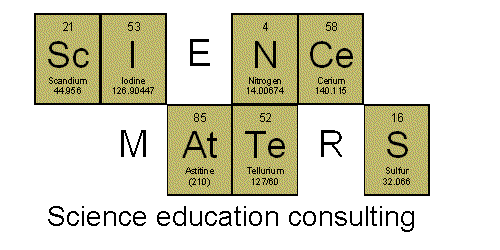Hot cross buns!
Hot cross buns!
One a penny, two a penny,
Hot cross buns!
Give them to your daughters.
Give them to your sons.
One a penny, two a penny,
Hot cross buns!
Activity 1: Rising Up
Hot cross buns are a type of yeast bread. Yeast is a living organism (a fungus to be exact), that is used to make bread dough rise. If you didn't use yeast, your bread would be small, flat and hard as a rock.
When you open a package of yeast and pour some out, it doesn't look like much. It certainly doesn't seem to
do anything. The yeast is in a dormant state - it's still alive but it's not actually doing anything; kind of like being asleep.
To get the yeast going you'll need to do two things:
1 - warm up the yeast so that it "wakes" up
2 - give the yeast something to eat

Put the yeast in a flask or small-neck bottle. Add some warm water (to wake up the yeast) and some sugar (to feed the yeast).
Stretch a balloon over the top of the flask/bottle and allow it to sit somewhere where everyone can keep an eye on it for the next hour or two.

As time passes, you'll notice the balloon filling up. It's catching the carbon dioxide the yeast is releasing. When you make bread, the yeast does the same thing, creating small pockets of air within the bread!
Activity 2: Does "Hot" Always Feel the Same?
Temperature can be a funny thing.... A 60 degree day in March feels fabulously warm and wonderful. That same temperature, in the middle of July, feels frigid. The temperature is the same, but the way in which it feels can vary depending upon our perspective.
Here's a way you can actually feel that principle at work in a matter of minutes.
You'll need three bowls:
--Fill one bowl with water and allow it to sit for about 5 minutes (or more) to reach room temperature.
--Fill the next bowl with water and add several ice cubes. Stir.
--Fill the final bowl with warm tap water. Aim for something that just
feels warm on your wrist - you don't water so hot that it'll hurt you.
Arrange the bowls on the table so that the room temperature water is in
the middle and the hot and cold water are on either side of it.
Place one hand in the warm water and the other hand in the cold water. Leave them there for about 20 seconds.
Remove your hands from the bowls and place them both in the middle (room temperature) bowl. How do they feel?
Even though they are now in the same water, the hand that was in the
cold water feels warm and the hand that had been in the warm water feels
cold.
The explanation....
You placed your hand in warm water. The energy (heat) moved from the
water, which was hotter than your hand, to your hand, making it feel
warm. Then you placed it in water that was colder than your (now
warmed) hand. The energy (heat) left your hand and flowed into the
water, leaving your hand feeling cold.
You placed your other hand in cold water. The energy (heat) moved from
your hand into the cold water. When you placed that hand, with a
reduced amount of heat energy, in the room temperature water, energy
(heat) flowed from that water to you hand because there was more energy
in the water than your hand.































